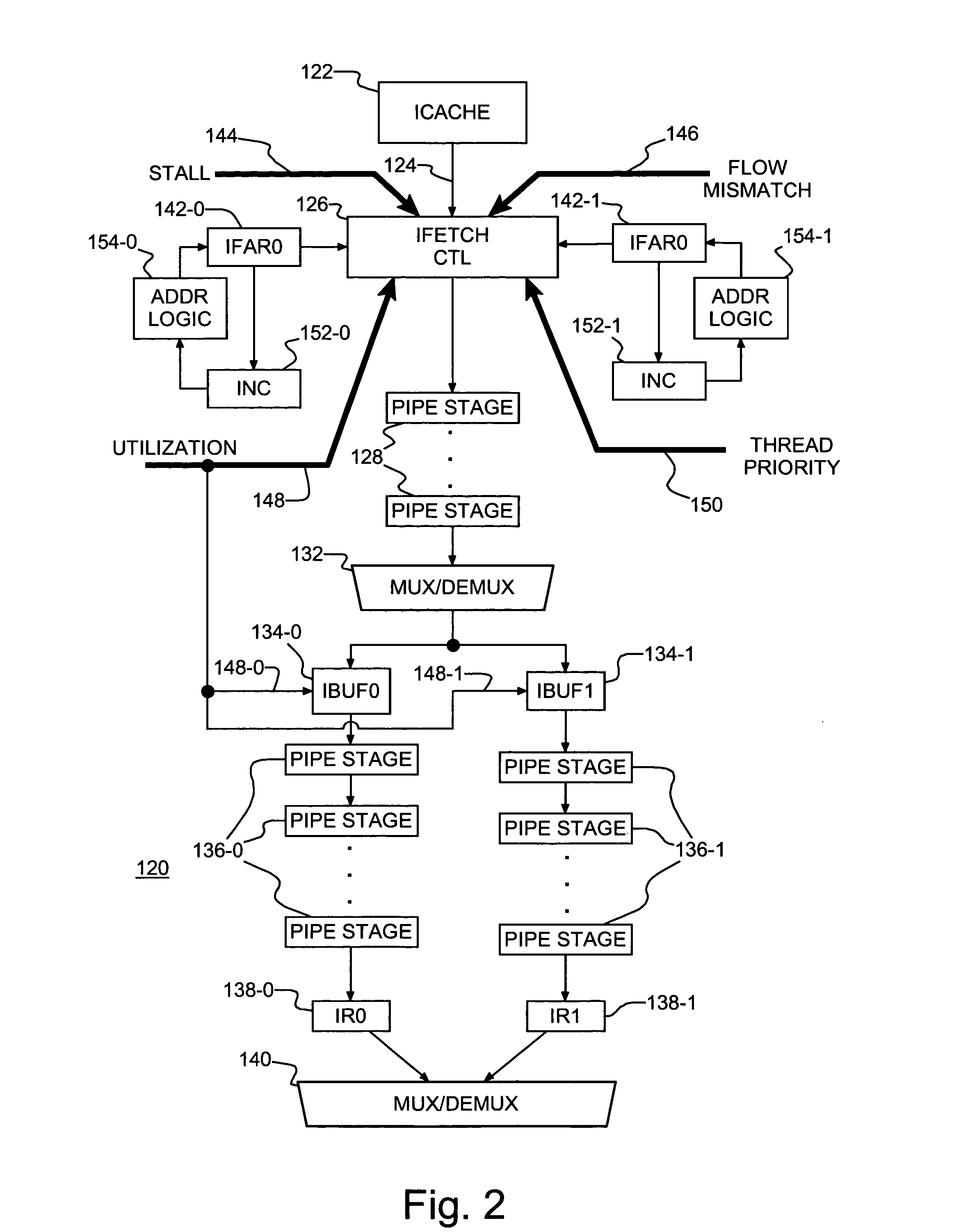Adaptive fetch gating in multithreaded processors, fetch control and method of controlling fetches
a multi-threaded processor and adaptive fetch technology, applied in the field of multi-threaded processors, can solve the problems of increasing the power consumption of microprocessors, increasing cooling and packaging costs, and increasing microprocessor power consumption, so as to minimize the power consumption of smt processors. the effect of reducing the overhead of performance or area overhead
- Summary
- Abstract
- Description
- Claims
- Application Information
AI Technical Summary
Benefits of technology
Problems solved by technology
Method used
Image
Examples
Embodiment Construction
[0023] Turning now to the drawings, and more particularly, FIG. 1 shows a general example of Simultaneous MultiThreaded (SMT) architecture wherein the front end of a state of the art SMT processor 100 is optimized for minimum power consumption without impacting performance or area, according to a preferred embodiment of the present invention. The SMT processor 100, which may be a single chip or multi-chip microprocessor, includes an instruction cache (ICACHE) 102 with a number of tasks or applications in cache contents from which to select / fetch. The ICACHE 102 provides cached instructions for R threads that originate from one of R ports 104-1, 104-2, -104-R. Preferred embodiment priority thread selection logic 106 selectively fetches and passes the contents of each of ports 104-1, 104-2, -104-R to an Instruction Fetch Unit (IFU) pipeline 108. Each of the R ports 104-1, 104-2, -104-R has a fixed maximum fetch bandwidth to the IFU pipeline 108 of a number of instructions per cycle. T...
PUM
 Login to View More
Login to View More Abstract
Description
Claims
Application Information
 Login to View More
Login to View More - R&D
- Intellectual Property
- Life Sciences
- Materials
- Tech Scout
- Unparalleled Data Quality
- Higher Quality Content
- 60% Fewer Hallucinations
Browse by: Latest US Patents, China's latest patents, Technical Efficacy Thesaurus, Application Domain, Technology Topic, Popular Technical Reports.
© 2025 PatSnap. All rights reserved.Legal|Privacy policy|Modern Slavery Act Transparency Statement|Sitemap|About US| Contact US: help@patsnap.com



